Executive Summary
Founded in 2007, Dropbox is an online storage, collaboration, and creativity platform that empowers individuals and teams to do their best work. Dropbox’s freemium go-to-market strategy coupled with its intuitive, seamless product experience enabled it to grow to 500 million registered users and 11 million paying users in 2017.1 As an early mover in the mass consumer adoption of cloud storage technology, Dropbox educated and acquired an army of consumers that would later become its salesforce, generating 90% of its revenue through self-serve channels.2 Revenue grew from $604 million in 2015 to $1.1 billion in 2017, a 2-year compound annual growth rate of 35%.3 As Dropbox enters a new phase of growth post-IPO, the company will be focused on expanding beyond storage into collaboration and creation, converting registered users to paying users, increasing retention, and improving margins.
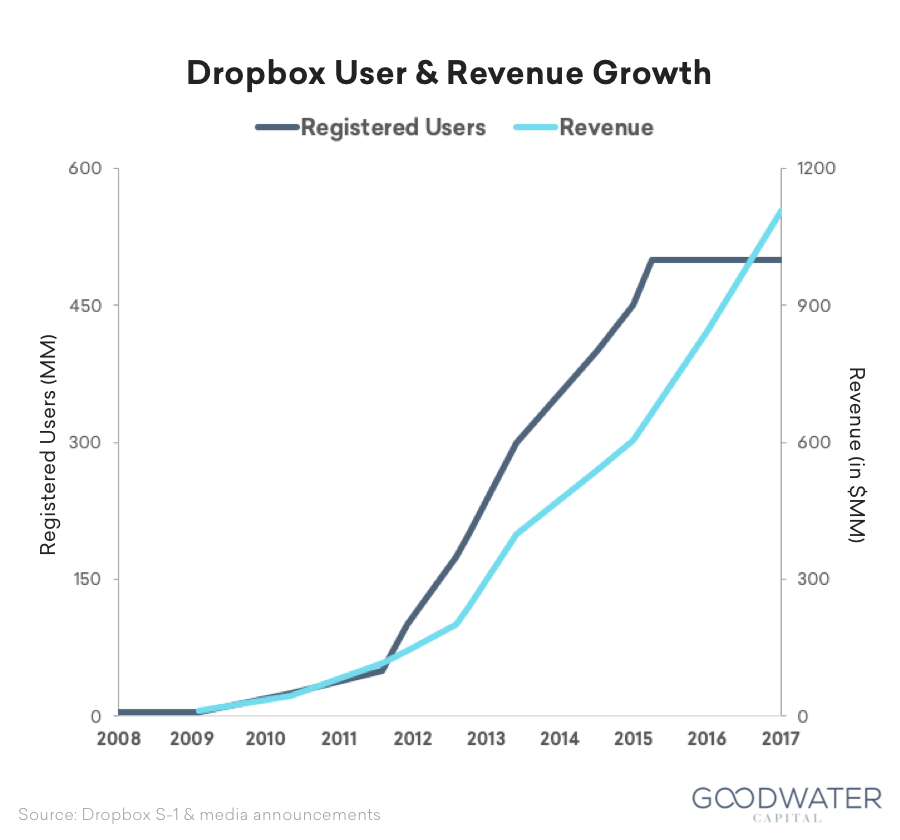
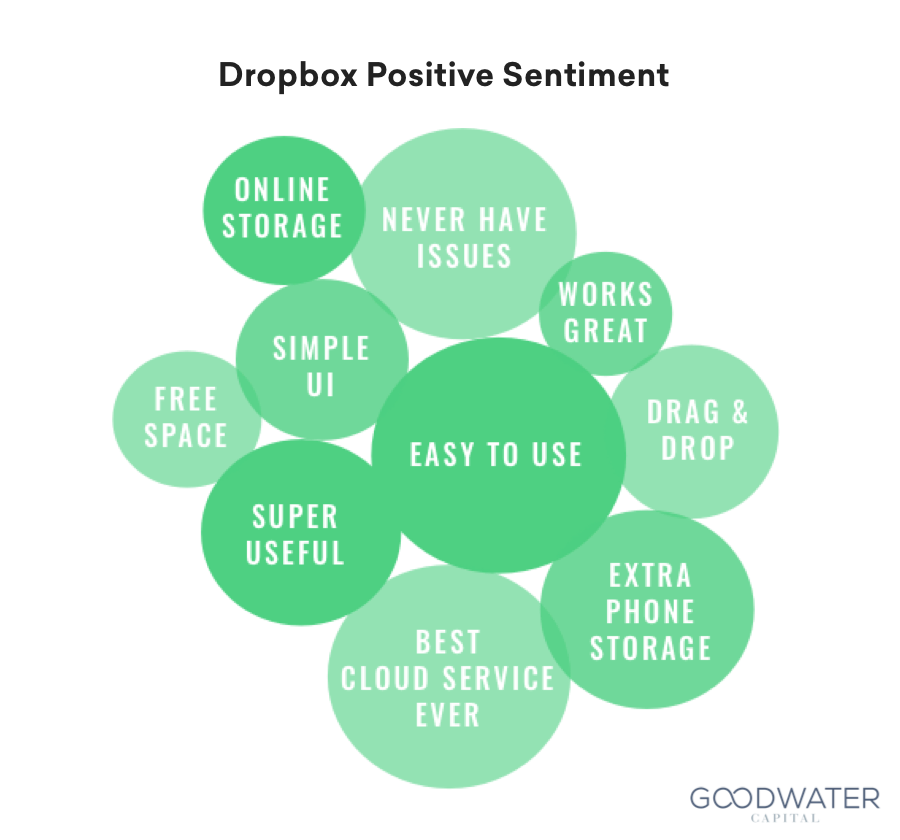
- Identify market gaps and build consumer-centric product experiences.
- Drive growth through word-of-mouth and attractive referral-based strategies.
- Win over consumers to influence enterprise decision making.
Winning Strategies (1 of 3)
Identify market gaps and build consumer-centric product experiences.
Dropbox’s seamless, easy-to-use product experience was critical to educating and unlocking mass-market adoption of cloud storage technology. Prior to Dropbox’s founding in 2007, consumers stored and transferred files offline via USB devices and hard drives. Online solutions such as file sending websites (yousendit.com), emailing attachments to oneself, FTP servers, and early services by Box and Microsoft were available but not widely utilized. These products served some niche enterprise and tech-savvy audiences but had limited appeal to individual consumers.
Dropbox identified consumer pain points in file management and developed a simple, easy-to-use product that fueled its momentum in what has become a $50 billion market.4 Its intuitive and reliable product design made it very simple for anyone to backup their files and access them anywhere, across a variety of desktop, laptop and mobile devices.
Goodwater’s sentiment analysis illustrates consumer appreciation for Dropbox’s product experience: its users love that it is “easy to use”, “super useful”, and “never has issues”.
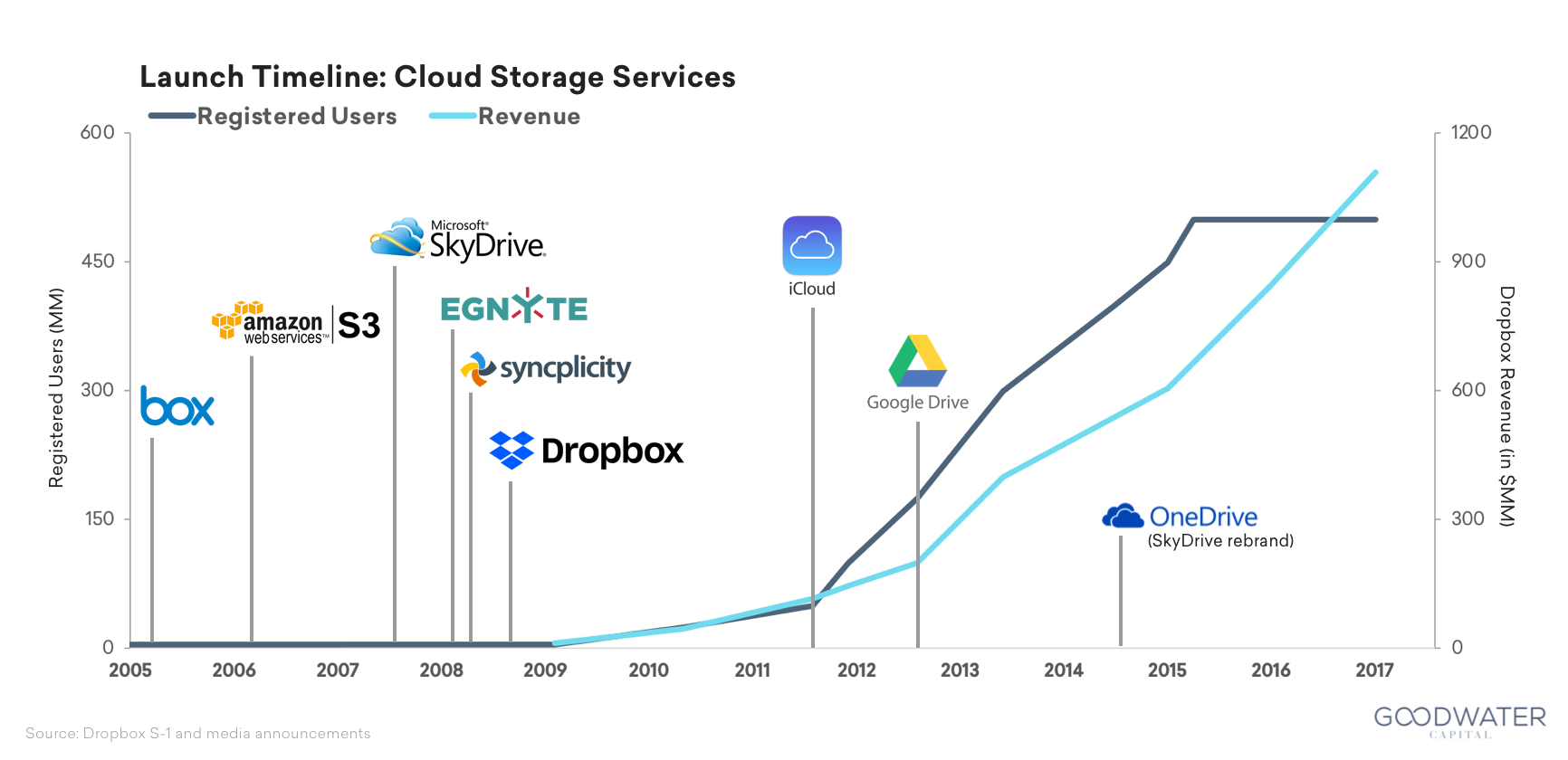
Winning Strategies (2 of 3)
Drive growth through word-of-mouth and attractive referral-based strategies.
Although the company experimented with search, affiliate and SEM marketing, which cost $233-$388 per customer5, Dropbox realized that this was not sustainable against a $99 annual service. Dropbox launched a referral marketing program that drove impressive word-of-mouth traction by offering additional free storage to users who sent invites to their friends. This helped the company rapidly grow from 100,000 users to 4 million users in 15 months, with 35% of daily signups from referrals and 20% from viral features like shared folders6.
Paypal’s referral marketing tactics, offering its key product (currency) as an incentive, inspired Dropbox’s referral strategy offering a two-sided incentive that awarded free storage to both the referrer and referees. As a storage company, this model effectively invested users in the product by not only introducing new users, but also facilitating a conversation that strengthened the brand’s core value proposition, storage. This strategy also allowed the company to defer costs, only incurring cost if the space was used.
Further, the simple and effective user value proposition incentivized word-of-mouth referrals among dense, promising user communities such as universities. Targeting university students was especially effective because it tapped strongly-networked communities and seeded an audience about to enter the workforce.
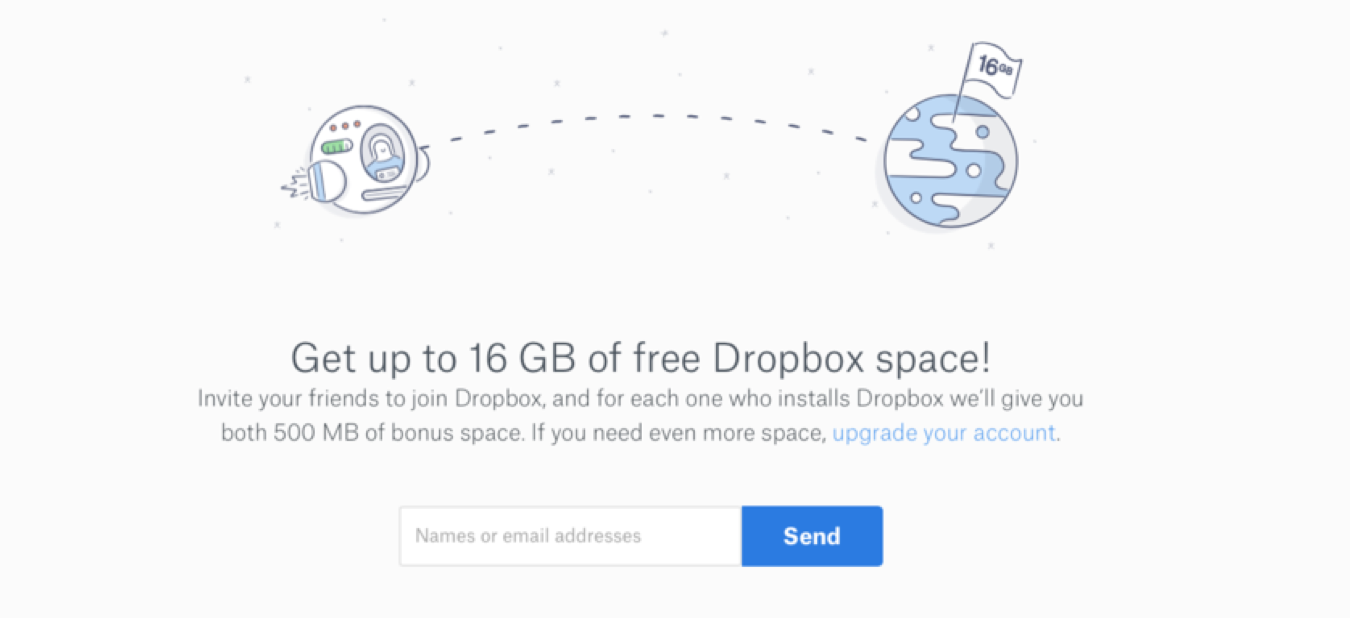
Winning Strategies (3 of 3)
Win over consumers to influence enterprise decision making.
Dropbox’s initial product attracted a large following of consumers who adopted it for personal use. Dropbox spread among individual consumers, who eventually became “Trojan horses” as they entered the workforce, gained critical mass, and converted into paid subscriptions. The company estimates that about half of users on the individual plan use it for work.7
Dropbox’s growth thrives in small business environments where IT decisions do not require sign-off from a single decision maker. This organic, bottom-up adoption drove Dropbox’s growth as organizations increasingly allowed employees to choose their own tools at work, and work became more remote. Today, 90% of Dropbox’s revenue is generated from its self-serve channels.
Dropbox represents an emerging trend of hybrid consumer-enterprise technology products where individual users influence employer decisions on enterprise purchases. Other examples of such hybrid models include developer tools Atlassian and Github, as well as Evernote, Slack, and SurveyMonkey.8
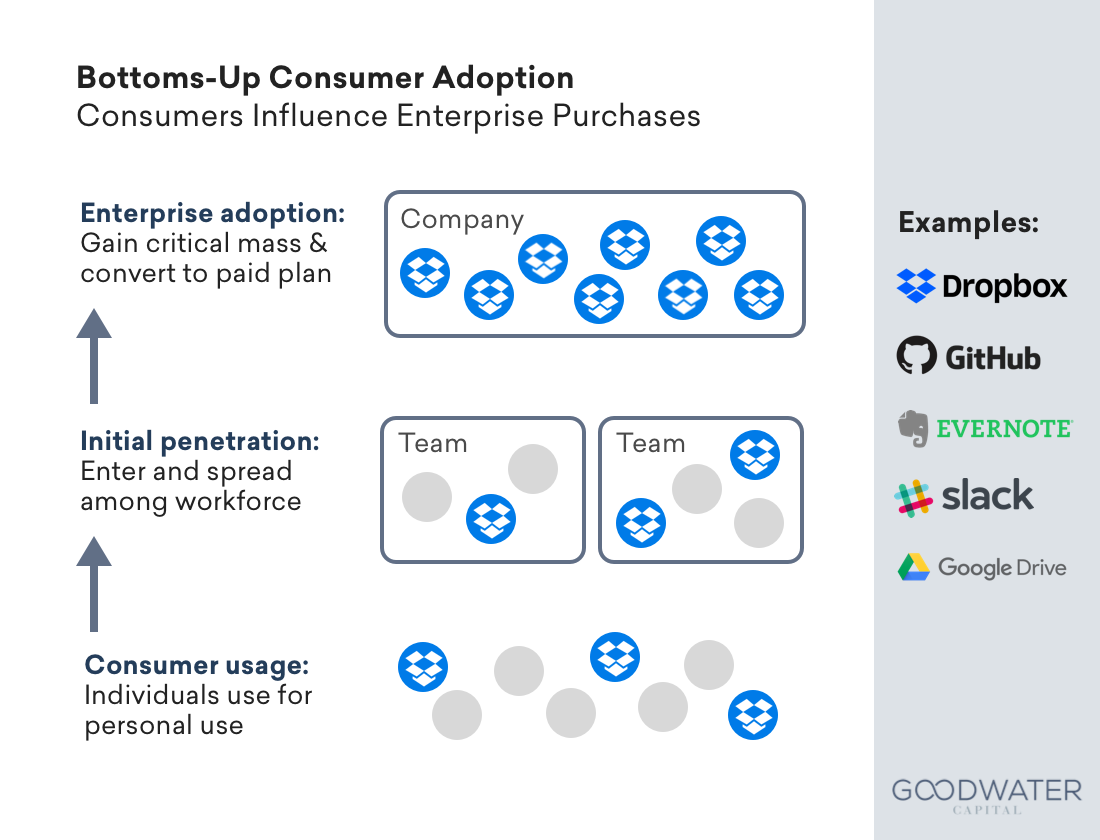
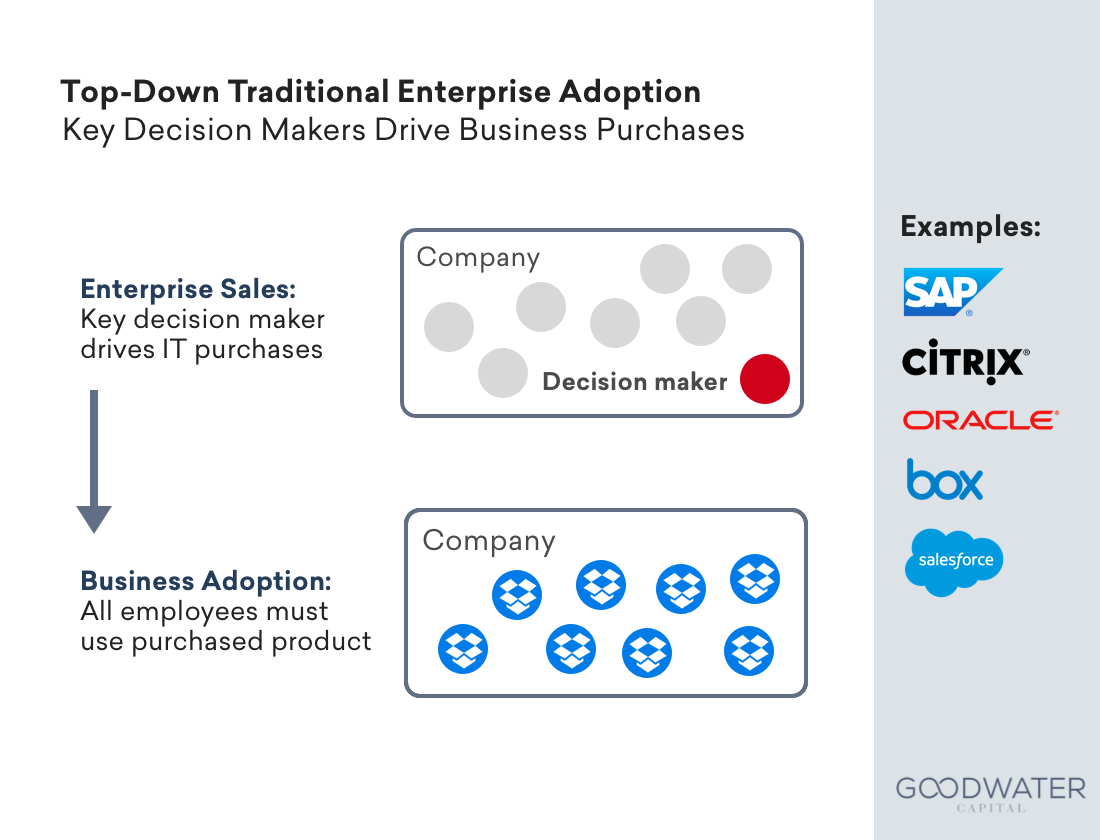
- Expand beyond utility into creation and collaboration.
- Convert freemium users to paying ones at a higher rate.
- Continue to improve margins.
The Next Level (1 of 3)
Expand beyond utility into creation and collaboration.
Dropbox’s first product was a file storage and synchronization solution that drove its initial distribution. The company then layered on sharing features to build engagement. As emerging competitors offer similar services with free space, Dropbox was challenged by low switching costs between services – just drag and drop your folders and wait a few hours.
To build out its moat and increase retention, Dropbox needs to continue its expansion from file storage and synchronization as a commoditized utility into creation and collaboration tools that drive higher engagement and retention. The company offers several collaboration features such as document scanning, commenting and highlighting, and also launched Paper – a collaborative document-editing service – in 2017.9
This move follows several industry trends, including the increasingly fluid and globalized nature of work, fragmentation of tools and content, and rising popularity of working remotely with individual users driving business purchase decisions. Dropbox has a large opportunity to build the tools that reimagine the future of work.
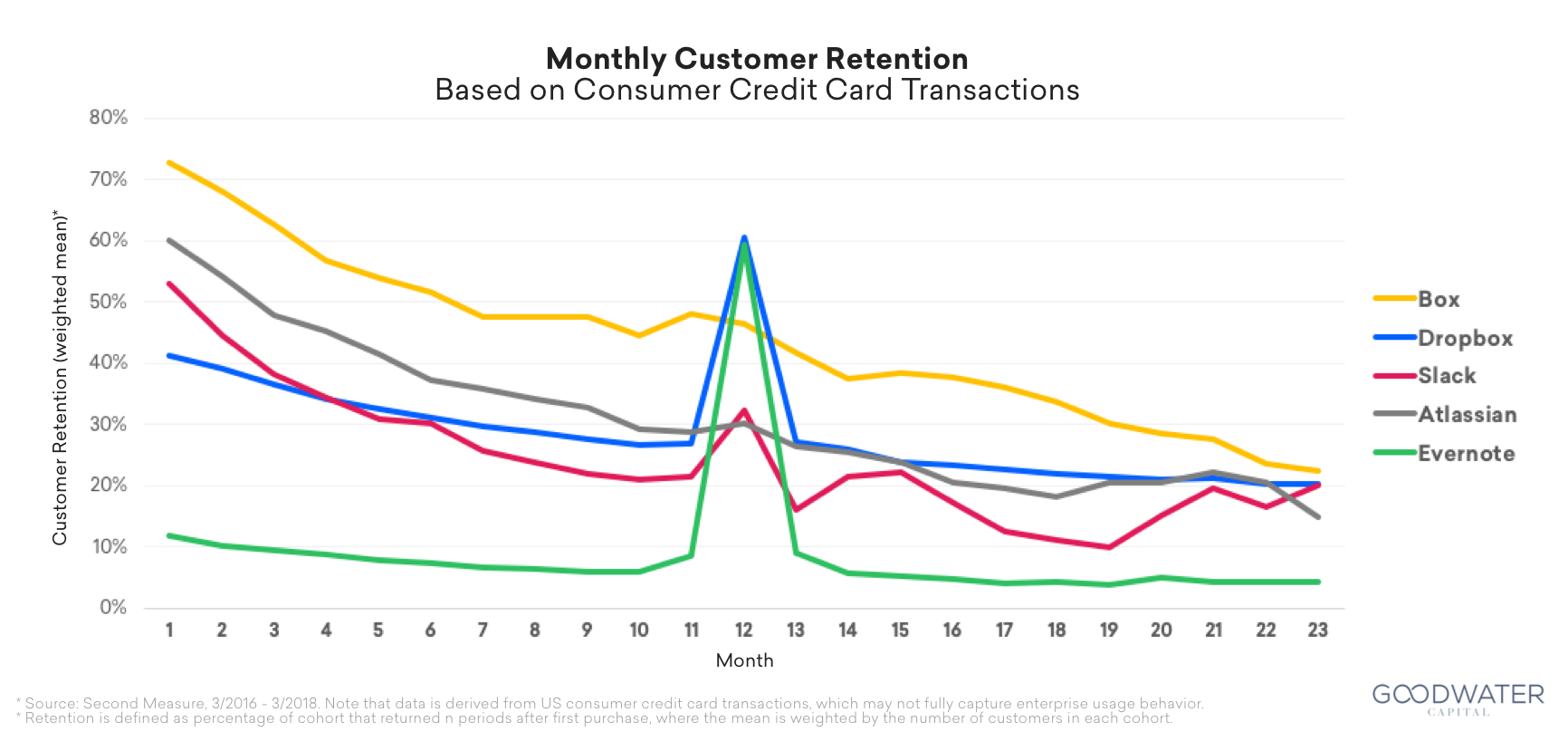
The Next Level (2 of 3)
Convert freemium user to paying ones at a higher rate.
Dropbox’s $1.1 billion of revenue is generated by 11 million paying users who represent 2% of the company’s overall 500 million user base. Increasing the conversion of this larger user base presents the most significant revenue opportunity for Dropbox. The company has identified 300 million users as likely to convert into paying users.10 Assuming penetration of just 10% of identified base, the company could generate an additional $3.4 billion in revenue by applying the $111.91 annual ARPU in 2017.11
Dropbox has not reported any incremental growth to its registered user base since March 2016 when the company first reported having 500 million users.12 Therefore, conversion is critical for Dropbox to offset the negative impact of user churn, particularly with small-to-medium businesses and larger enterprises. While the company may continue to explore other revenue growth channels such as re-invigorating registered user growth or increasing upsells and/or lowering churn to improve its 90% net revenue retention,13 Dropbox’s ability to clearly articulate its paid offering’s value proposition to its free users presents the largest tangible upside for the company.
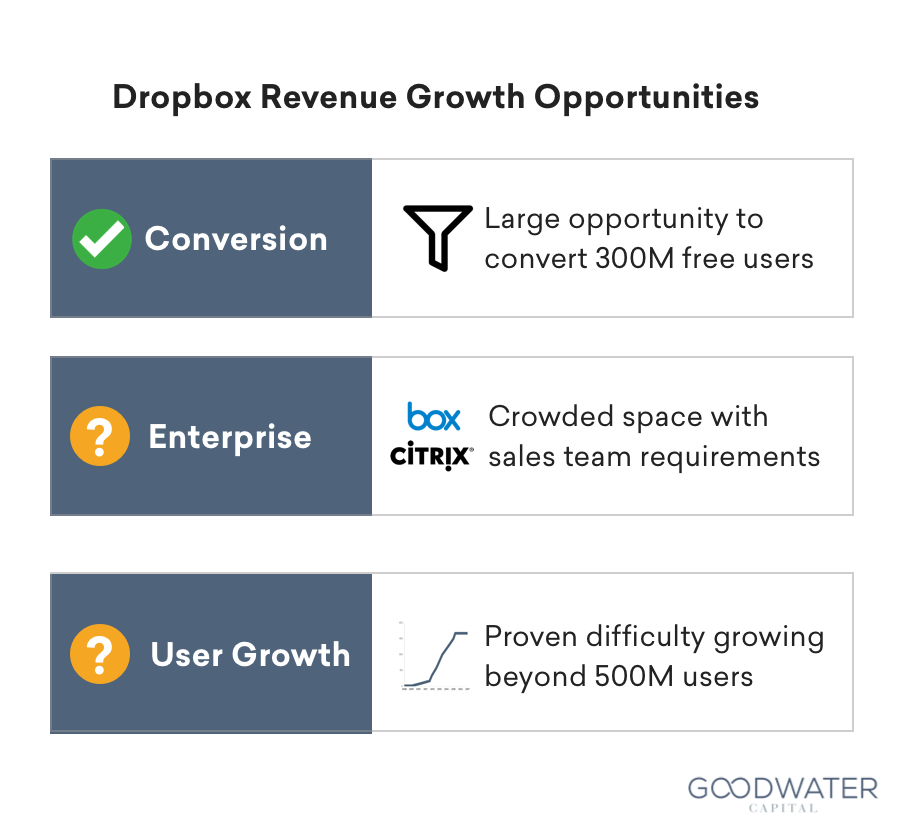
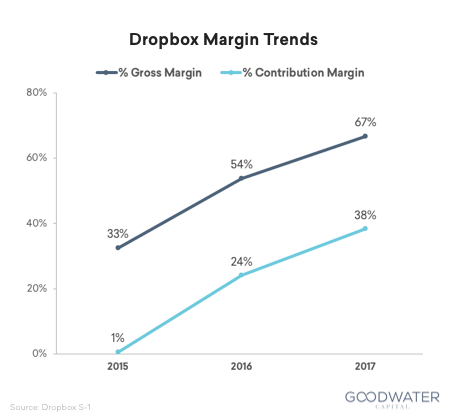
The Next Level (3 of 3)
Continue to improve margins.
From 2015 to 2017 Dropbox improved its gross margins from 33% to 67%. The company’s gross margins have continued to improve to 70% in Q4 2017.14 The rapid improvement is mainly due to Dropbox’s move away from Amazon Web Services (AWS) to its own proprietary platform. Today, Dropbox’s own custom-built platform houses more than 90% of their users’ data with room for further optimization.15 In an increasingly competitive environment, Dropbox has secured a more sustainable business model by decreasing its dependence on other and competing platforms.
Dropbox has also been able to leverage its large user base to grow through word-of-mouth (WOM) and improve its marketing efficiency over the past two years. The company’s sales and marketing expense as a percentage of revenue has decreased from 32% in 2015 to 28% in 2017.16 In addition to the gross margin gains, the company drove its contribution margin, including marketing expense from 1% in 2015 to 38% in 2017.17
- Dropbox S-1, at page 1 & 2.
- Dropbox S-1, at page 2.
- Dropbox S-1, at page 1.
- Dropbox S-1, at page 5.
- Slideshare, https://www.slideshare.net/gueste94e4c/dropbox-startup-lessons-learned-3836587/20-Cost_per_acquisition_233388_For.
- Slideshare, https://www.slideshare.net/gueste94e4c/dropbox-startup-lessons-learned-3836587.
- Dropbox S-1, at page 58.
- Bloomberg, https://www.bloomberg.com/gadfly/articles/2018-02-27/dropbox-is-hard-to-value-because-we-think- about-it-all-wrong.
- Dropbox S-1, at page 4.
- Dropbox S-1, at page 4.
- Dropbox S-1, at page 13.
- Dropbox, https://blogs.dropbox.com/dropbox/2016/03/500-million.
- Dropbox S-1, at page 64.
- Dropbox S-1, at page 71.
- Dropbox S-1, at page 120.
- Dropbox S-1, at page 55.
- Dropbox S-1, at page 11.